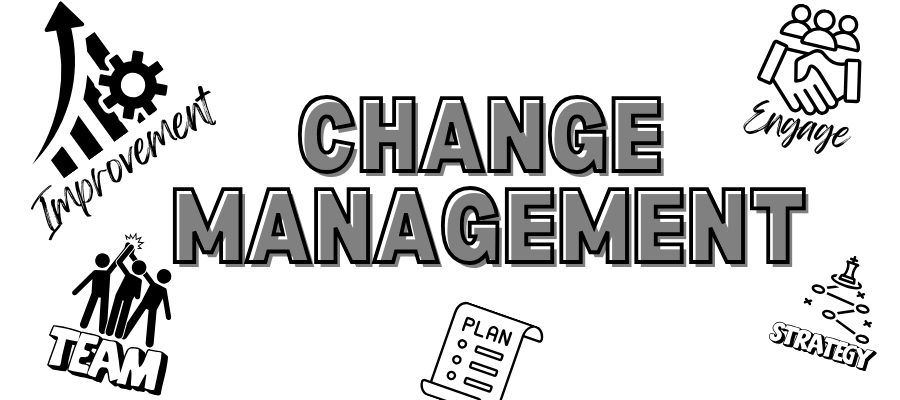Enterprise Resource Planning (ERP) systems are the lifeblood of modern businesses, streamlining operations and integrating data across departments. However, the success of an ERP implementation hinges not just on the software itself, but on the human element – the people who will be using it. This is where the often-overlooked concept of “the human side of ERP” comes into play.
Understanding the Human Impact.
Implementing a new ERP system is a significant change for any organisation. It disrupts established workflows, demands new skills, and can create anxiety about job security. Employees accustomed to familiar systems may find the new interface daunting. Ignoring these human factors can lead to resistance, decreased productivity, and ultimately, a failed ERP implementation.
The Role of Change Management

This is where change management comes in. Change management is the structured approach of guiding individuals and teams through organisational transitions. A dedicated change management team plays a crucial role in ensuring a smooth ERP implementation by:
- Understanding the Strategic Process: They need a clear understanding of the organisation’s strategic goals for the ERP system. This knowledge informs how to communicate the benefits to employees and tailor training programs.
- Managing Digital Transformation: Implementing an ERP system is often a key aspect of digital transformation. The change management team helps navigate this broader shift, ensuring employees understand how the new technology fits into the overall vision.
- Building a Change Management Strategy: A comprehensive strategy outlines the communication plan, training approach, and methods for addressing employee resistance. It considers project phases, timelines, and budget limitations.
- Sustainability of Change Management: Successful change management extends beyond the initial implementation. The team fosters long-term user adoption by providing ongoing support and addressing user feedback.
Key Change Management Team Roles and Responsibilities:

- Change Champion: This senior leader sponsors the change initiative, advocating for its importance and driving employee buy-in.
- Project Manager: They lead the logistics of the change, ensuring the project stays on track and within budget.
- Communication Specialist: This individual crafts clear, concise messaging that keeps employees informed and addresses concerns.
- Trainer: They develop and deliver training programs that equip employees with the necessary skills to navigate the new system effectively.
- Resistance Management Specialist: This role anticipates and addresses employee resistance by providing support and addressing anxieties.
Understanding Levels of Employee Resistance

Employees exhibit varying levels of resistance to change. Recognizing these levels helps tailor communication and support:
- Denial: Employees may initially deny the need for change or the impact it will have.
- Anger: Frustration with the new system or the disruption to their work can lead to anger and resentment.
- Bargaining: Employees may attempt to negotiate how the change is implemented or what they need to adapt.
- Depression: The uncertainty and workload associated with change can lead to feelings of helplessness or depression.
- Acceptance: Ultimately, the goal is to guide employees towards acceptance and productive use of the new system.
Strategies for Managing Resistance
- Open and Transparent Communication: Regular updates and clear explanations about the “why” behind the change help alleviate anxiety.
- Comprehensive Training: Provide effective training programs that cater to different learning styles and skill levels.
- Employee Involvement: Encourage participation by including employees in the planning and feedback stages.
- Recognition and Rewards: Acknowledge and reward employees who demonstrate a positive attitude and adopt the new system quickly.
The Importance of Organisational Development
Change management goes hand-in-hand with organisational development (OD). OD focuses on the long-term growth and effectiveness of an organisation, ensuring its alignment with strategic goals. By integrating OD principles, change management efforts become more sustainable and contribute to an overall culture of adaptability.
Leading Organisational Change: A Process Approach

Effective change management follows a structured process:
- Planning and Assessment: Analyse the current state, identify potential challenges, and develop a detailed plan.
- Communication and Engagement: Communicate the change effectively, address concerns, and involve employees in the process.
- Implementation and Training: Roll out the new system thoughtfully, with comprehensive training and support.
- Reinforcement and Sustainability: Monitor adoption, address lingering issues, and celebrate successes.
Conclusion: Investing in the Human Side
By investing in the human side of ERP and fostering a culture of change, organisations can significantly increase the odds of successful implementation. A dedicated change management team, coupled with a strategic approach, empowers employees to embrace the new system and unlock its full potential.
Remember, a successful ERP implementation is not just about technology; it’s about people. By acknowledging the human side of change and focusing on employee well-being, organisations can navigate the transition smoothly and achieve lasting success.
